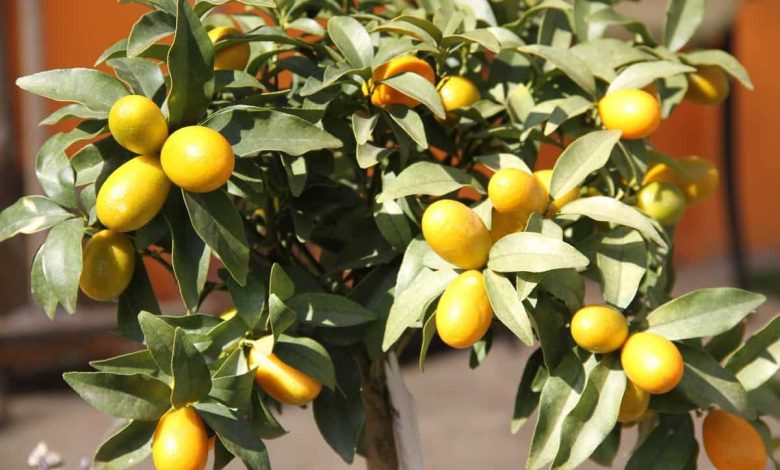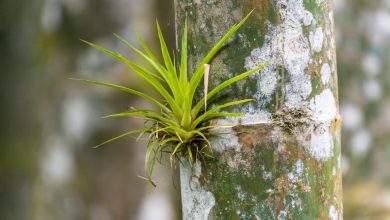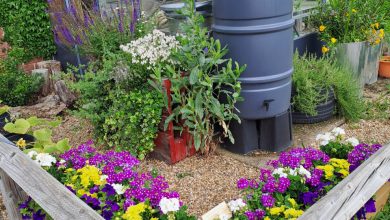Kumquat Care: [Soil, Humidity, Pruning and Problems]

What characteristics does the kumquat have?

One of China’s best exports is the Kumquat, a perennial tree belonging to the Fortunella genus.
It is a famous relative of the orange tree that lavishes wonderful fruits of an intense orange color and characteristic oval or round shape.
They have a bittersweet flavor with an intensely fragrant skin that also gives us the possibility of consuming it without having to peel its shell.
There are species that also come from Japan. Popular species are: Fortunella hindsii, Fortunella japonica, Fortunella polyandria, Fortunella margarita. Fortunella Japonica Swing or Marumi, whose fruits are very aromatic and round.
Its common name varies according to the region. In some places they call it dwarf orange, Chinese orange, Japanese orange, Cumquat or Quinoto.
Did you know…?The Kumquat can be planted in a garden of medium size, because its maximum development reaches a height of about 4.5 meters. But it has another wonderful peculiarity: it adapts to living in wide pots, so they can live happily and bear delicious fruit in home environments, such as a terrace.
You have to have a lot of patience with it, because it grows slowly, loves the bright sun and prefers heat to cold, even though there are species that are capable of withstanding temperatures that do not drop below -10ºC without being too affected.
Between the months of March to June the foliage is covered with many scented orange blossoms that contrast with the green and shiny green leaves. But in winter, when the fruits reach their final size, the hand of God colors them from golden yellow to reddish orange, depending on the species.
The dance of colors is quite a visual spectacle. To grow this generous tree, it is necessary to place it in a place where the sun is full, but always avoiding sudden winds to cross it. It is the great condition that deprives in its care.
Its fruit, versatile when consumed, is rich in vitamin C, antioxidants, mineral folic acid, is rich in fiber and has the virtue of helping to combat excess uric acid. In infusions it becomes an effective cough reliever. It goes very well in jams, desserts and as a pastry filling it is sublime.
What land needs does the kumquat have?
Kumquats live happily on cool, neutral soils that are very well drained . But the most important thing is that they have enough space to develop fully, so it should be better managed as an isolated specimen in the garden or on the ground.
Before planting, it is best to remove all weeds or bushes from the land, so that they are completely clean, aerated and ready to apply a substrate based on organic matter rich in nutrients.

They do not like clay soils because they compact and end up affecting the roots. A slightly acidic, nutrient-rich soil with a pH between 5 to 6 is best. But especially it must be ensured that it is well drained.
How to make kumquat grow strong and vigorous?
Planting in spring and transplanting at the same time is the most rational. If we want to be successful, it is advisable to grow them as fruit trees for ornamental use, that is, plant them in places where mild climates are predominant.

Also, as we have already said, they support life in pots, although the climate must be temperate.
Light
The ideal is indoors is to orient the plant near a window facing south, in order to take advantage of natural light as much as possible.
Pass
Another great condition that we must take into account is the application of fertilizer cycles every 15 days during the summer.
Irrigation

Controlled watering is absolutely essential, because if, for example, it is exaggerated in versions of the tree grown in pots, then species of pests as annoying as cochineal will be attracted.
So it is clear that irrigation is of a moderate category, both in a pot and in open ground.
This rule prevents diseases from proliferating, because this tree does not tolerate waterlogging, it gets sick because of it.
In spring and summer it is prudent to water every 3 or 4 days. Irrigation water is poured until it begins to drain copiously. And it resumes when the land is completely dry.
There is a simple expert calculation. For each tree we must pour 2 liters of water every 15 days. No more no less. Soft water, with settled lime after a period of rest, is the most recommended.
What humidity does kumquat need?
A good recipe to maintain correct humidity levels is achieved after preparing a soft substrate, rich in organic material that contains 1/3 sand.

In addition, a bed made of clay stones capable of sucking water can be conditioned, an optimal status for the plant to have the humidity it requires when there is a lack of water.

A practice that notably favors it is the application of drip irrigation so that the humidity is constant. In summer, especially, it should be done daily so that the plant does not get overwhelmed by the heat. Otherwise, watering is spaced once a week.

An intelligent way to keep the humidity constant is to adopt the habit of always watering at dusk or first thing in the morning, without major variations in the hours.
As they are not friends with intense cold, if it is grown in areas with these characteristics, then it is best to grow them in containers. This ensures protection when the temperature drops too low.

Is it necessary to prune the kumquat?
A pruning of the lower branches is a guarantee of elegance, because it will ostensibly improve its appearance.
How often should we prune the kumquat?
To give shape, you just have to be vigilant and prune the branches that protrude from its crown, which is beautiful, very decorative if it is rounded and you can see the contrast between the dark green leaves and the orange or golden fruits.
How to prevent kumquat pests and diseases from appearing?
One of the diseases with the highest incidence is chlorosis, as occurs in many citrus fruits. That is why it is essential to water them with low-lime water, not with so-called hard water because the leaves will turn yellow and the fruits will stop growing normally. This is known as iron chlorosis.

Likewise, the so-called rot occurs, which attacks the root of the plant probably due to excess water. That is why it is essential to insist that irrigation must be spaced, it is only applied when the land dries completely. As its origin is fungal, it is combated with fungicide products.

There are many quality brands on the market. Among the pests, the spider mite is the queen of the party and is one of the insects with the greatest power of penetration into its leaves, which will also turn yellow and have multiple bites caused by this tiny being.
Acaricide products (of a specific type) dislodge the red spider mite from the tree in a short period of time. But the key is to avoid dry and poorly ventilated environments.

Another insect of great destructive power is the white fly. They have no size, but they are capable of extracting all the sap from the tree and completely ruining it if they are not fought in time. They are removed with regular sprays of a contact insecticide preferably recommended by experts.
Maybe you are also interested in:



![Photo of Plum Diseases: [Types and How to Fight Them]](https://www.complete-gardening.com/wp-content/uploads/2022/08/plum-diseases-types-and-how-to-fight-them-365x220.jpg)
